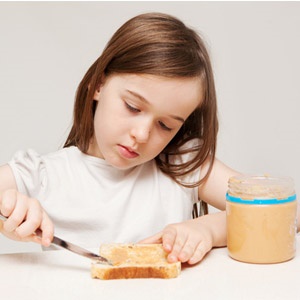
For children with peanut allergies, home is more dangerous than school, researchers say.
Banning peanut products ineffective
The Canadian study also found schools that ban peanut products are not less likely to have an accidental exposure occur than schools that don't have these policies in place.
"Our study looked at 1,941 children who had been diagnosed as being allergic to peanuts to determine how exposure occurs, how serious the outcomes of the exposure are, and what treatment is given," said the study's first author, Sabrine Cherkaoui, of the University of Montreal.
"We discovered that children are most at risk of exposure in their own homes. Furthermore, when children do have a moderate or severe reaction to an exposure, parents and medical professionals often do not know how to react appropriately," Cherkaoui said in a university news release.
Read: What are allergies?
The children were nearly 7 years old on average at the study's start. During roughly three years of follow-up, 567 exposures involving 429 children occurred, the researchers said.
Of these incidents, 11 percent were classified as severe, and half were considered moderate reactions.
"The most significant finding of this study is the discovery that most moderate and severe accidental exposures are managed inappropriately by caregivers and physicians," Cherkaoui said.
Many reactions remain untreated
"Only 42 percent of severe peanut allergy reactions recorded in this study were evaluated by a medical professional, and almost one in six went totally untreated," she said.
"For moderate reactions, the situation is far worse – medical attention was sought only 25 percent of the time," Cherkaoui added.
Overall, 37 percent of the reactions took place at the child's home, the researchers found. Fourteen percent occurred at other people's homes, and about one in 10 happened at a restaurant.
Read: Causes and symptoms of allergies
Fewer than 10 percent happened at school or day care, while nearly one-third happened at other or unknown places, the study said.
Schools and day care centres that prohibit peanuts involved nearly 5 percent of peanut exposures, while schools and day care centres that allow peanuts accounted for only 3 percent of accidental exposures, the researchers pointed out.
Cherkaoui said there are a couple of ways to interpret that finding. "Firstly, schools and day cares that allow peanuts may be doing a good job of controlling risk due to heightened awareness of the dangers," she said.
False sense of security
"Secondly, when peanuts are not allowed, the child may be lulled into a false sense of security, as peanut foods may inadvertently be brought in and shared with the child."
Although the risk of accidental exposures declined during the course of the study (probably because the children and their parents developed better avoidance strategies), teens and adolescents were at greater risk than younger kids, according to the study.
Read: Treating allergies
The researchers concluded risk-taking behaviour among teens could play a role in accidental peanut exposures.
The study was published recently in the journal Clinical and Translational Allergy.
Read More:
Gluten: allergy, intolerance or hypochondria?
Could a dishwasher increase your child's allergy risk?
Does your child have an allergy or a cold?
Image: A girl eats a peanut butter sandwich from Shutterstock




 Publications
Publications
 Partners
Partners











